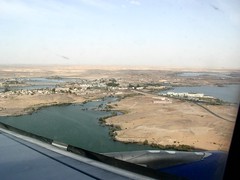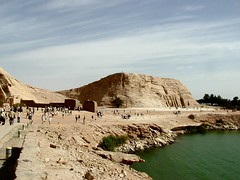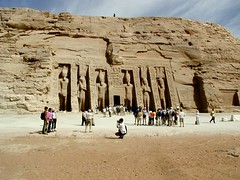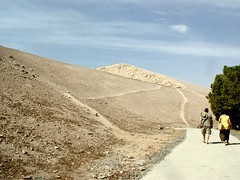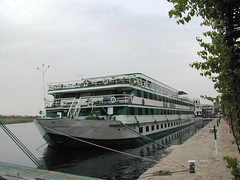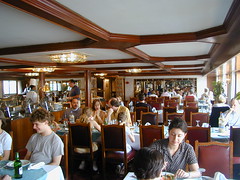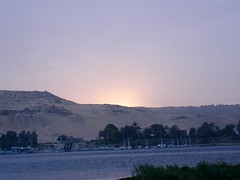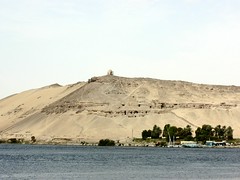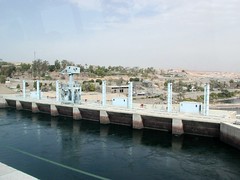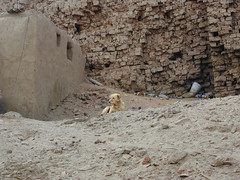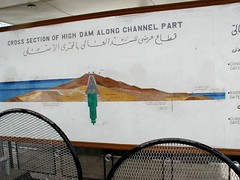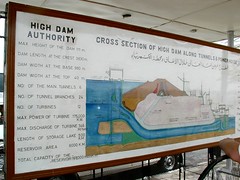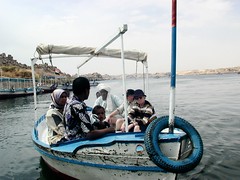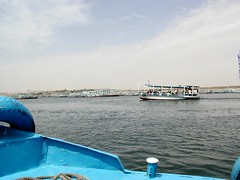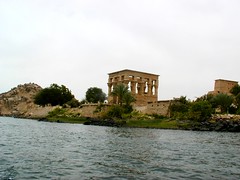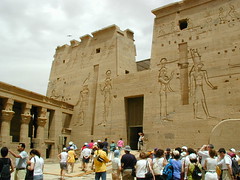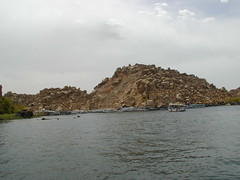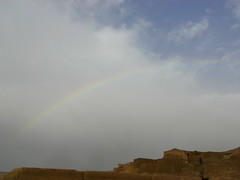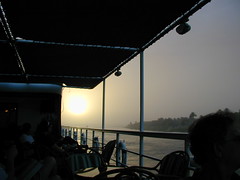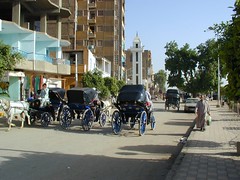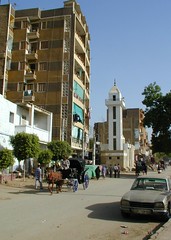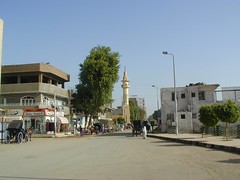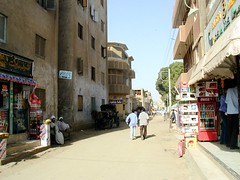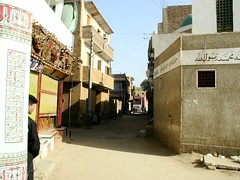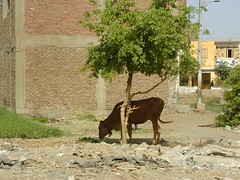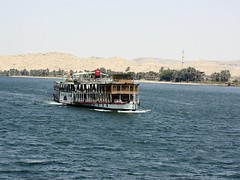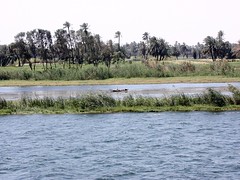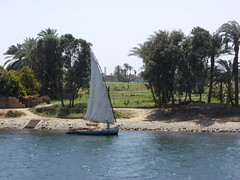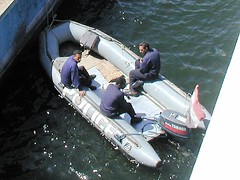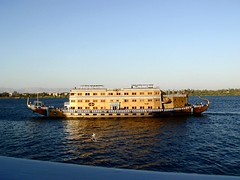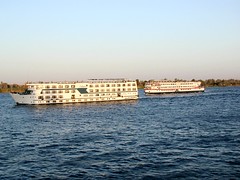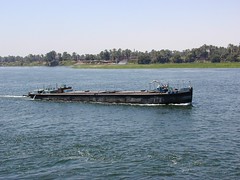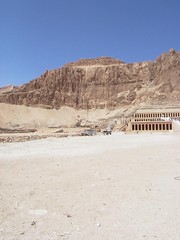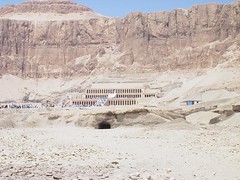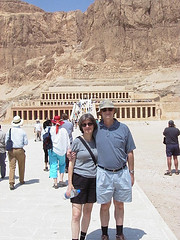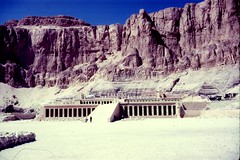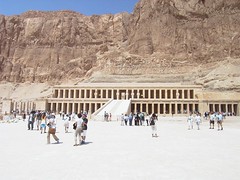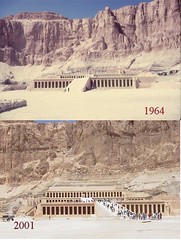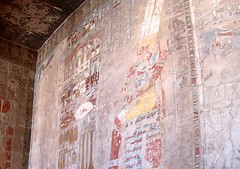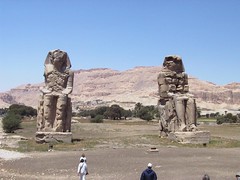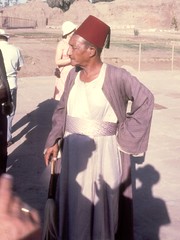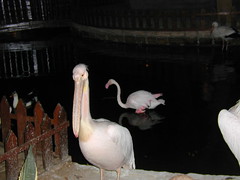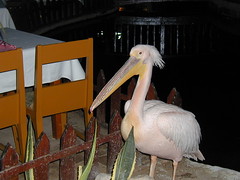Gerard M. Foley
Travel & Photography Collection
Abu Simbel to Luxor
After our day visiting ancient sites near Cairo, very early in the morning we flew from Cairo Domestic Airport, a few miles northwest of Cairo International, to Abu Simbel. Our Egyptair flight was in an Airbus A300-600, and stopped at Aswan, something more than a hundred miles north of Abu Simbel.
About 70 percent of the water of the Nile comes from Lake Tanganyka, in east central Africa. It flowed down a series of cataracts (rapids), the first of which was a little south of Aswan. In 1902, when Egypt was under British control, a low dam was built at Aswan which produced some electrical power, and could control, to a degree, the flow of water to lower Egypt, making the irrigation by the annual rising of the Nile more productive. During the presidency of Gamal Abdel Nasser in the mid 1950's, it was proposed to build a high dam at Aswan to increase the production of electric power. The withdrawal of American support from this project led to a war in 1956 involving Egypt, Israel, Great Britain and France. After the cessation of hostilities, Egypt accepted the assistance of the Soviet Union to build the high dam. It has produced the largest man-made lake in the world, Lake Nasser.
More than three thousand years earlier, Ramses II, a king of the XIXth Dynasty, some time after the reign of Tutenkhamen, built two large temples at the base of a cliff along the Nile at Abu Simbel. The colossal statuary of these temples make them of international artistic and architectural importance. They would have been covered by hundreds of feet of water when Lake Nasser filled.
An international engineering effort, led by Egyptians, literally cut these enormous temples out of the rock and raised them to the top of the cliffs. The international contributions to this effort resulted in permission being given to many donor countries to remove smaller temples, which would have been inundated, from Egypt and to reerect them elsewhere. One of these, the Temple of Dendera, is now part of the Metropolitan Museum in New York City.
We returned to Aswan in the same airplane, which must have been busy with something else while we admired the temples.
There we boarded the Presidential Nile Cruises Nile Admiral, which would take us to Luxor. PNC has several such boats which run frequently between Cairo, Luxor and Aswan.
When the low dam filled, the lake behind it flooded the large Greco-Roman Temple of Philae. An International effort, like that which raised the Ramesside Temples at Abu Simbel, built a coffer dam around the flooded temple, emptied the water, and moved the Temple to a nearby island, higher than the one on which the Temple originally stood. The temple lies in the water between the Low and High dams. After we saw the High Dam we visited it.
We then boarded Nile Admiral again to go down river to another Greco-Roman Temple at Kom Ombo
At a large number of sites along the Nile in ancient times Nilometers were built. They are essentially large cisterns connected to the Nile, so that the water level in the Nilometer is the same as that in the river. The readings of the Nilometers were relayed downstream to tell the height and progress of the flood, so that preparations could be made to arrange the irrigation most efficiently.
The boat stopped at Edfu to visit another Greco-Roman temple. I preferred to save my energies for sights that might interest me more. I walked along the street by the Nile.
The Temple of Hatshepsut at Deir el Bahri is on the west side of the Nile opposite Luxor. Hatshepsut was the female Pharaoh of early XVIIIth dynasty who developed Egyptian trade.
Her temple has been reconstructed. It was modeled on a ruined Middle Kingdom temple south of it.
